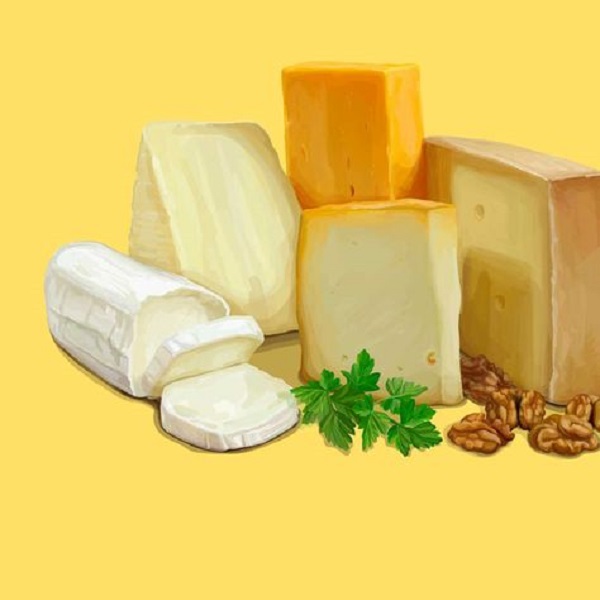Cheese, a beloved culinary delight, comes in various forms and textures, each with its own unique characteristics and production methods. One aspect that often sparks debate and curiosity is pasteurization. In this comprehensive guide, we’ll delve into the world of pasteurized cheese, exploring its definition, benefits, potential drawbacks. And we will explore how it compares to its raw milk counterpart.
Defining Pasteurization: A Heat Treatment Process
The Basics
At its core, pasteurization is a heat treatment process applied to milk before cheesemaking. The milk is heated to a specific temperature for a set duration to eliminate harmful bacteria.
Temperature and Time
The exact temperature and time vary depending on the specific pasteurization method used.
-
- High-Temperature Short-Time (HTST) Pasteurization: Milk is heated to 161°F (71.7°C) for 15 seconds.
- Low-Temperature Long-Time (LTLT) Pasteurization: Milk is heated to 145°F (62.8°C) for 30 minutes.
The Benefits of Pasteurization
Enhanced Safety
The primary benefit of pasteurization is its ability to significantly reduce the risk of foodborne illnesses caused by harmful bacteria like Listeria, Salmonella, and E. coli. This is particularly important for vulnerable populations, such as pregnant women, young children, and individuals with weakened immune systems.
Extended Shelf Life
Pasteurization also helps to extend the shelf life of cheese by eliminating spoilage bacteria. This allows for wider distribution and greater accessibility to consumers.
Consistent Quality
Pasteurization can help to ensure a more consistent cheese product by reducing variability caused by naturally occurring bacteria in raw milk.
Potential Drawbacks of Pasteurization
Flavor and Texture Alterations
Some argue that pasteurization can subtly alter the flavor and texture of cheese, potentially leading to a less complex or nuanced taste.
Loss of Beneficial Bacteria
Pasteurization eliminates not only harmful bacteria but also some beneficial bacteria that contribute to the unique flavors and textures of raw milk cheese.
Nutrient Degradation
While the impact is minimal, some heat-sensitive nutrients, such as certain vitamins, may be slightly reduced during pasteurization.

Pasteurized vs. Raw Milk Cheese: The Great Debate
- Raw Milk Cheese: Made from unpasteurized milk, raw milk cheese is prized by some for its unique flavors and textures, attributed to the diverse microbial communities present in the milk. However, it also carries a higher risk of foodborne illness.
- Pasteurized Cheese: Offers enhanced safety and a longer shelf life, but some cheese enthusiasts argue that it lacks the complexity and nuance of raw milk cheese.
- Regulations: In many countries, including the United States, raw milk cheese must be aged for at least 60 days to reduce the risk of harmful bacteria.
Making Informed Choices
- Personal Preference: Ultimately, the choice between pasteurized and raw milk cheese is a matter of personal preference. Consider your taste preferences, risk tolerance, and any health considerations when making your selection.
- Label Reading: Always read the label carefully to determine whether a cheese is made from pasteurized or raw milk.
- Storage and Handling: Regardless of whether you choose pasteurized or raw milk cheese, proper storage and handling are crucial to maintain its quality and safety.
Pasteurized cheese offers a safe and widely available option for cheese lovers, while raw milk cheese appeals to those seeking unique flavors and textures. By understanding the pasteurization process, its benefits and drawbacks, and the regulations surrounding raw milk cheese, you can make informed decisions about the cheese you consume and appreciate the diverse world of cheesemaking.
Exploring the World of Pasteurized Cheese: A Diverse Selection
Pasteurized cheese comes in a vast array of varieties, catering to a wide range of palates and preferences. Here’s a glimpse into some popular types:
- Cheddar: A classic cheese loved for its sharp and tangy flavor, cheddar comes in various ages, ranging from mild to extra sharp.
- Mozzarella: This versatile cheese is perfect for melting on pizzas, topping salads, or enjoying fresh with tomatoes and basil.
- Gouda: With its creamy texture and nutty flavor, Gouda is a popular choice for snacking, sandwiches, and cheese boards.
- Brie: This soft-ripened cheese boasts a creamy interior and a bloomy rind, offering a delicate and earthy flavor.
- Parmesan: A hard, dry cheese grated over pasta, salads, or soups for a salty and nutty kick.
- Swiss: This cheese is recognized for its characteristic holes and mild, nutty flavor. It is commonly used in sandwiches and fondue.
- Blue Cheese: Known for its bold, pungent flavor and distinctive blue veins, blue cheese is often enjoyed crumbled on salads or paired with fruits and nuts.

Beyond the Basics: Other Pasteurized Dairy Products
- Milk: Pasteurized milk is the most common type of milk available in stores, offering a safe and convenient option for consumption.
- Yogurt: Most yogurt comes from pasteurized milk, providing a healthy and nutritious snack or breakfast option.
- Ice Cream: Pasteurized milk and cream are key ingredients in ice cream, ensuring a safe and enjoyable frozen treat.
- Butter: Butter is typically comesfrom pasteurized cream, adding richness and flavor to various dishes.
When shopping for cheese, it’s crucial to read the label carefully. Look for phrases like:
- “Made from pasteurized milk”
- “Pasteurized”
If the label does not explicitly mention pasteurization, it’s likely made from raw milk. Remember, raw milk cheese must be suitable for at least 60 days in the United States.
Cheese Safety: Tips for Handling and Storage
Whether you choose pasteurized or raw milk cheese, proper handling and storage are crucial for maintaining its quality and safety.
- Refrigeration: Store cheese in the refrigerator at a temperature between 35°F and 40°F.
- Wrapping: Wrap cheese tightly in plastic wrap or wax paper to prevent it from drying out or absorbing odors from other foods in the refrigerator.
- Cutting Board: Use a clean cutting board and knife specifically designated for cheese to prevent cross-contamination.
- Serving: Allow cheese to come to room temperature before serving for optimal flavor and texture.
- Leftovers: Consume leftover cheese within a few days and store it properly wrapped in the refrigerator.
Beyond Food Safety: Other Considerations
Environmental Impact
Pasteurization can contribute to a more sustainable cheese production system by reducing waste due to spoilage and enabling efficient transportation and storage.
Economic Factors
The extended shelf life of pasteurized cheese allows for broader distribution and greater market access, potentially impacting the economics of cheese production and consumption.
Cultural Significance
In some regions, traditional cheesemaking practices involving raw milk are in the culture and heritage. The debate surrounding pasteurization often intersects with discussions on preserving culinary traditions and protecting consumer choice.
The Role of Consumer Education
As consumers, understanding the differences between pasteurized and raw milk cheese empowers us to make informed choices that align with our values and preferences.
Seeking Information
When purchasing cheese, read labels carefully, ask questions at cheese shops or farmers markets, and research online to gather information about different cheese varieties and their production methods.
Balancing Risks and Benefits
Weigh the potential risks and benefits of both pasteurized and raw milk cheese, considering factors like food safety, flavor, and personal preferences.
Supporting Local Producers
Consider supporting local cheesemakers who prioritize sustainable and ethical practices, whether they use pasteurized or raw milk.

Conclusion: Savoring the World of Cheese
Pasteurized cheese offers a safe and delicious way to explore the diverse flavors and textures of this beloved culinary delight. By understanding the pasteurization process, making informed choices, and following proper handling and storage practices, you can confidently enjoy cheese as part of a balanced and enjoyable diet.
Whether you prefer the mildness of cheddar, the creaminess of brie, there’s a pasteurized cheese out there to satisfy every palate. So, go ahead and indulge in the wonderful world of cheese, knowing that you’re making safe and delicious choices.
